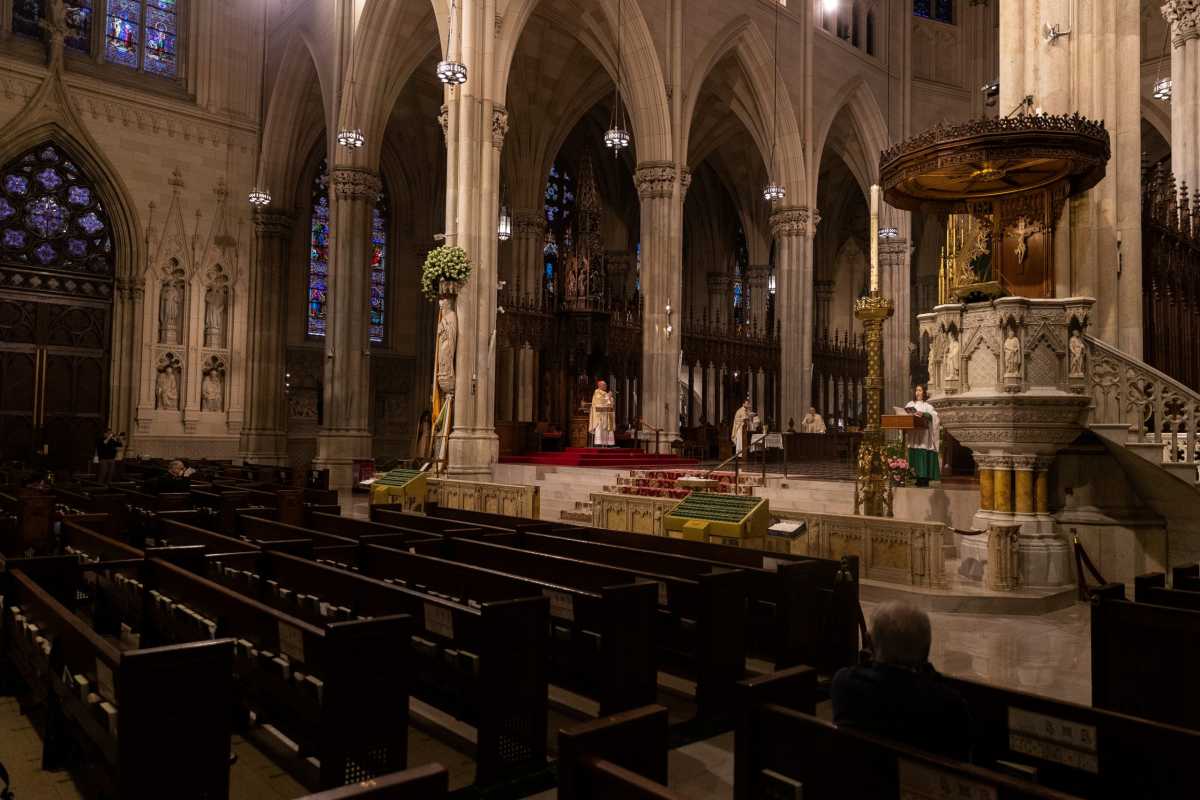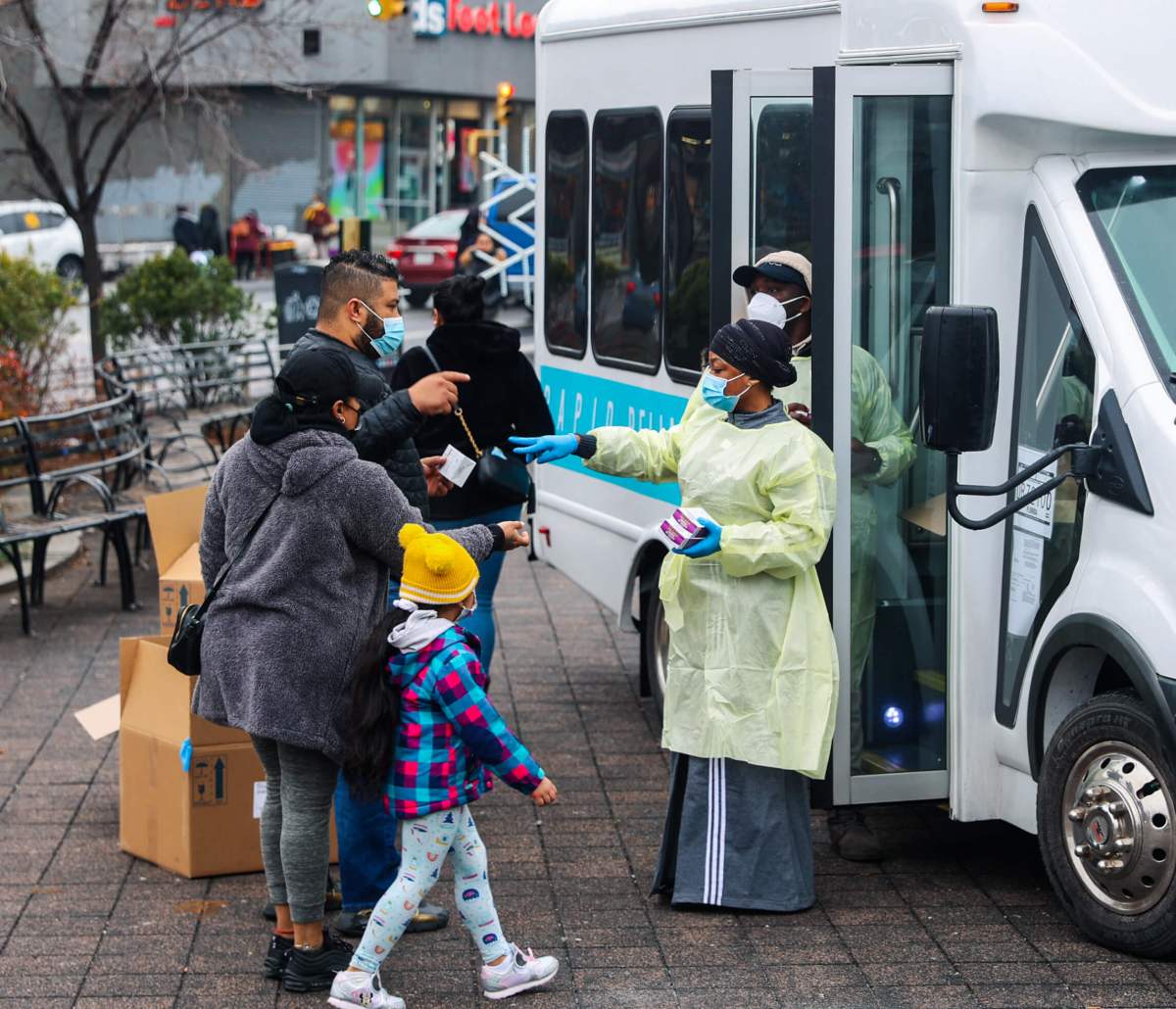For the last 10 weeks, the Archdiocese of New York closed its church doors to the Catholic faithful as the COVID-19 pandemic ravaged the region. Now, as the cases continue to drop, church leaders announced plans on Thursday to reopen them gradually in the weeks ahead.
Much like plans announced for reopening the state region by region, Cardinal Timothy Dolan told the press that church openings will be staggered — and extra care will be taken to protect those who come to pray.
“We have the moral imperative everybody to protect the health of our people and the wider community,” Dolan said. “We have been doing that, we are doing that and we’ll continue to do that. We also have a duty to care for the hearts and souls of our people.”
The archdiocese serves 2.81 million Catholics living in the Bronx, Manhattan and Staten Island, as well as Westchester, Dutchess, Orange, Sullivan, Rockland, Putnam and Ulster Counties. The northern suburban counties haven’t nearly been as impacted by COVID-19 as Westchester and Rockland Counties, or as the Bronx, one of the hardest hit areas of New York City.
While the churches have been off-limits during the COVID-19 pandemic, Catholics in New York have resorted to watching Masses celebrated among priests and livestreamed online. The Easter Sunday Mass at St. Patrick’s Cathedral, celebrated by Cardinal Dolan and a handful of priests, was viewed by tens of thousands on one of the Catholic church’s most important holy days.
Yet when the churches reopen in the weeks to come, the cardinal warned, parishioners should not expect an immediate return to normalcy.
“When we do get back, people are going to find some things that are very different than the church they’re used to,” Dolan remarked.
Some of the northern churches have already reopened their doors for private prayer or confessions. But over the next few weeks, the archdiocese will roll out its “Faith Forward” reopening plan, created by church leaders in consultation with health care professionals and public officials, to gradually resume the normal rites and rituals of the Catholic church.
“This will be implemented region by region, parish by parish, adapted to meet each parish family’s needs,” said Monsignor Joseph LaMorte, vicar general of the archdiocese, in outlining the plan.
Sunday Mass will not resume right away; Dolan acknowledged that it may take a number of weeks before conditions permit the weekly celebration. The obligation for attending Sunday Mass was suspended back in March, and the cardinal acknowledged that the suspension will likely continue for much longer to protect the most vulnerable from infection, such as seniors.
“We’re still telling our people that the obligation to attend mass on Sundays remains suspended until this is over,” he said. “Even when we reopen for Sunday mass, that will probably still be the case.”
The churches will reopen in five phases under the Faith Forward plan:
- Churches opening for private prayer and confessions.
- Celebration of baptisms and marriages, though each ceremony will be limited to no more than 10 attendees.
- Celebration of Holy Communion outside of Mass. This will likely happen during weekday periods.
- Celebration of daily and funeral Masses with limited attendance.
- Celebration of Sunday Mass with supervised attendance. At each Mass, attendance will be limited to no more than 25% of a church’s occupancy permit.
Once the pandemic emergency ends, the churches will resume their full schedules and activities.
Meanwhile, each church will be required to alter their seating arrangements to keep attendees from socially distancing. Dolan pointed to Our Saviour Catholic Church on the East Side, where the May 21 press conference was held, as an example of how churches could rearrange their seating.
Monsignor Kevin Sullivan, the church’s pastor, pointed to sections of the church that were reserved for singles, couples and families. Each section is cordoned off to meet social distancing guidelines. Crosses laid upon the pews serve for visitors as lines of demarcation to help keep everyone spaced safely apart.
Regular church rituals will also be suspended during Mass. Attendees won’t be able to shake hands, kiss or hug one another during the Sign of Peace. Only the consecrated bread will be distributed during Holy Communion; consecrated wine will not be made available to the public.
Each church will undergo rigorous cleaning to disinfect frequently touched surfaces such as pews, door handles and microphones. Holy water fonts will be emptied, and even worship aids (such as Missalettes and prayer cards) and paper bulletins will be removed from circulation for sanitary reasons.
Volunteer workers at the church, such as ushers, will be required to wear masks. LaMorte also noted that all parish priests will be tested weekly for COVID-19 as a further reassurance for the faithful.
The archdiocese “Faith Forward” plan does not cover the churches in the Diocese of Brooklyn and Queens. Bishop Nicholas DiMarzio, who leads the diocese, attended the May 21 presser in Manhattan and said a similar reopening plan is in the works.
He noted that Joseph Esposito, formerly the head of the city’s Emergency Management office, is leading a committee to develop the plan, which will be announced in a few days.
“Whatever happens, we will be careful,” DiMarzio said. “We will not preempt things. We will be cautious, but at the same time, we will push as much as possible for as many people who can to come to church.”
More information can be found online at archny.org/faithforward.







































